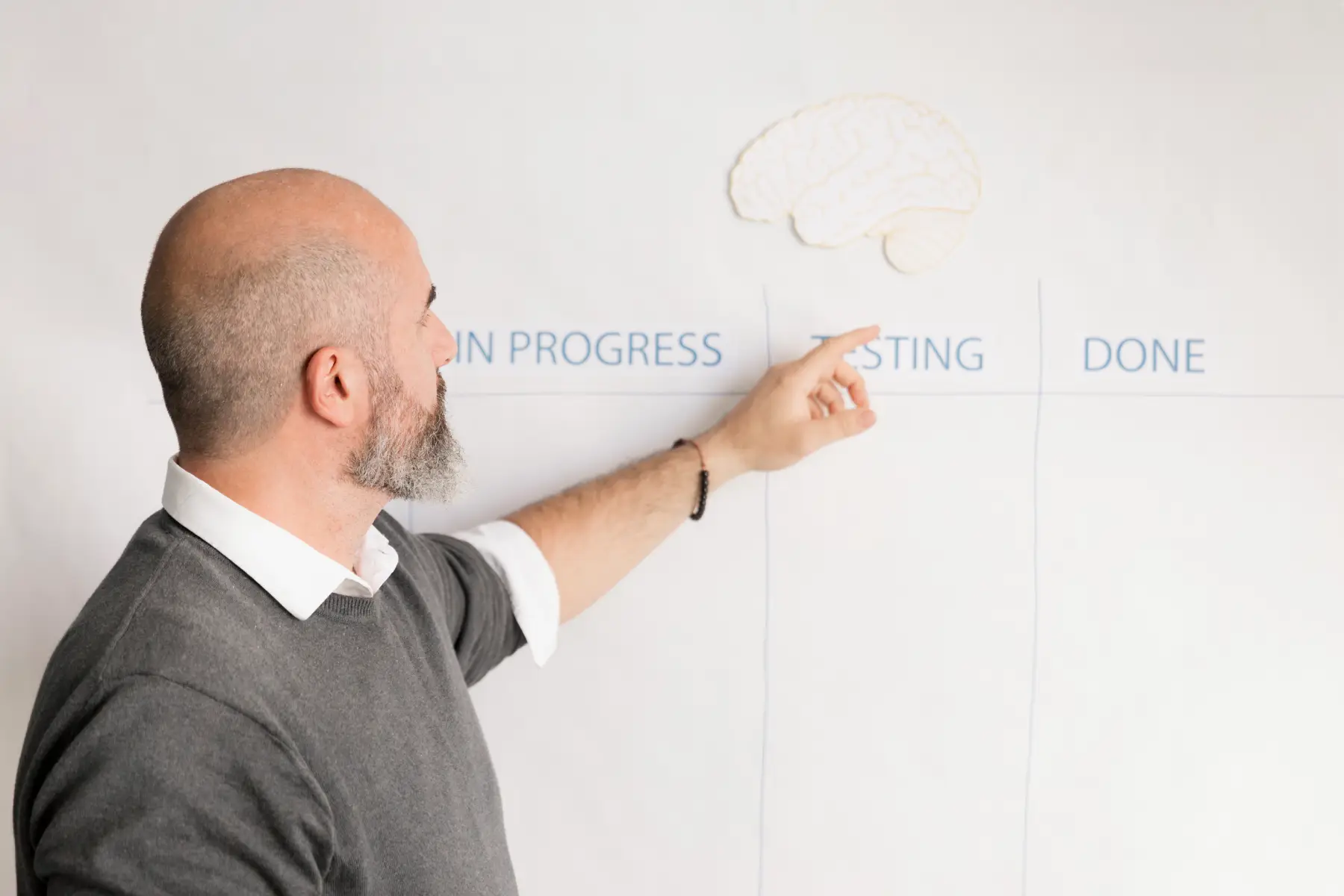Introduction: The Challenge of Effective Decision-Making
Every day, individuals are faced with countless decisions, from minor choices like what to eat to significant life-changing decisions such as career moves or personal relationships. Yet, the process of decision-making often feels overwhelming, particularly when external circumstances seem uncontrollable. This is where an understanding of the Circle of Control, a mental framework for managing focus and energy, becomes invaluable.
The Circle of Control is a principle rooted in psychology and personal development that empowers individuals to prioritise what they can directly influence while letting go of what they cannot. By embracing this concept, people can make clearer, more confident decisions, manage stress more effectively, and strengthen their decision-making skills for personal and professional success.
This whitepaper explores the Circle of Control concept, its importance in decision-making, and actionable strategies to apply it, empowering individuals to embrace a sense of control and foster better outcomes in life and work.
What Is the Circle of Control?
The Circle of Control is a psychological model that categorises the elements of life based on what individuals can control, influence, or simply accept. It was popularised by Stephen Covey in his book The 7 Habits of Highly Effective People, under the concept of proactivity. The model is often represented as three concentric circles:
- The Circle of Control – Things you can directly control (e.g., personal actions, habits, attitude).
- The Circle of Influence – Things you can partially influence (e.g., relationships, team dynamics, work processes).
- The Circle of Concern – Things outside of your control (e.g., the economy, world events, other people’s actions).
By shifting focus from the outermost Circle of Concern to the Circle of Control, individuals can take proactive steps to make more effective decisions while minimising unnecessary stress or frustration.
The Link Between the Circle of Control and Decision-Making Skills
Decision-making is often clouded by external factors, including uncertainty, fear, and pressure from outside influences. The Circle of Control provides a lens through which individuals can approach decisions with greater clarity and focus. Instead of wasting energy on what they can’t control, they focus on tangible factors within their power to act upon.
How the Circle of Control Enhances Decision-Making:
- Clarifies Priorities: By focusing on controllable aspects, decision-makers gain clarity on where to direct their time and resources.
- Reduces Stress: Addressing what you can control rather than worrying about externalities reduces anxiety and mental fatigue.
- Empowers Action: Knowing what is within your reach allows you to act decisively with confidence.
- Strengthens Problem-Solving: Concentrating on actionable areas improves problem-solving skills by eliminating distractions.
Incorporating the Circle of Control into decision-making practices turns potentially chaotic situations into manageable tasks, leading to more effective and confident choices.
Breaking Down the Three Circles
Understanding the breakdown of the Circle of Control model is essential to applying it in everyday decision-making.
1. The Circle of Control
The Circle of Control houses all the things an individual can directly manage through their actions, behaviours, and mindset.
Things Within Your Circle of Control:
- Your attitude and responses.
- Personal routines, habits, and productivity.
- How you communicate with others.
- The goals you set and choices you make.
When decision-making becomes overwhelming, focusing on these controllable factors allows for proactive, empowered approaches. For instance, instead of worrying about the outcome of a job interview (external factor), you can focus on preparing thoroughly (internal factor).
2. The Circle of Influence
The Circle of Influence includes factors that you may not control entirely but can influence to some degree. This often involves external relationships and environments, such as:
- Team collaboration at work.
- Relationships with friends and family.
- Workplace dynamics and culture.
Acknowledging what you can influence—without overstretching or demanding full control—helps you navigate decisions involving others. For example, as a manager, while you may not control an employee’s feelings about a task, you can positively influence them by providing motivation and resources.
3. The Circle of Concern
The Circle of Concern contains larger, external factors that are entirely outside individual control. Examples include:
- Global events, politics, or natural disasters.
- The opinions or actions of others.
- Societal norms or economic trends.
Worrying about uncontrollable factors wastes energy and reduces decision-making capacity. Recognising when something lies in this circle encourages acceptance and redirection of focus to areas within your control or influence.
Common Challenges in Decision-Making
Even with an understanding of the Circle of Control, decision-making is rarely straightforward. Below are common challenges:
- Analysis Paralysis: Overthinking every option can lead to stagnation, especially when external threats dominate your thought process.
- Fear of the Unknown: Uncertainty surrounding decision outcomes often leads people to avoid taking action altogether.
- External Pressures: Social expectations, workplace cultures, or familial pressures often draw focus away from internal control, leading to stress-filled decisions.
- Emotional Bias: Fear, insecurity, or personal biases can cloud objectivity and hinder rational decisions.
Understanding these challenges and identifying their place in the Circle of Control can help individuals overcome decision-making barriers while maintaining focus on what truly matters.
Strategies to Use the Circle of Control for Decision-Making
Mastering decision-making with the Circle of Control requires practical strategies that promote actionable focus and resilience. Below are proven methods to enhance your skills.
1. Accept What You Cannot Change
One of the most challenging lessons in decision-making is acknowledging when something falls entirely outside your control. By deliberately letting go of these concerns, you conserve valuable emotional energy for more actionable areas.
Example:
Instead of worrying about market fluctuations when starting a business, focus on crafting a strong business plan or improving your skill set—areas within your control.
2. Focus on Small, Controllable Actions
Breaking down problems into manageable steps reinforces clarity and reduces overwhelm. These “micro-decisions” often pave the way for larger, more impactful outcomes.
Example:
If you’re struggling with time management, focus on implementing one small habit, such as creating a prioritised to-do list every morning, rather than worrying about overall productivity.
3. Strengthen Emotional Intelligence (EI)
Emotionally charged situations often blur the boundary between what is or isn’t controllable. Developing emotional intelligence ensures better regulation of your reactions and responses during decision-making.
How to Build EI:
- Practise mindfulness to recognise when emotions cloud judgement.
- Reflect on past decisions to learn from emotional biases.
4. Develop Proactive Mindsets
Proactivity is key to the Circle of Control. Instead of reacting impulsively to external stressors, plan ahead to deal with challenges that may arise.
Example:
If facing a competitive job market concerns you, proactively update your CV, network with potential employers, and develop new skills to strengthen your chances.
5. Integrate Decision-Making Tools
Utilise structured decision-making frameworks to clarify the scope of your control before acting.
Tools to Use:
- SWOT Analysis (Strengths, Weaknesses, Opportunities, Threats).
- Eisenhower Matrix (Distinguishing urgent vs. important tasks).
- Mind Maps for brainstorming actionable steps and factors.
6. Expand Your Circle of Influence
While controlling everything is impossible, actively working to expand your Circle of Influence broadens opportunities for impact over time. Develop better interpersonal relationships, leadership skills, and collaboration methods to increase your reach.
7. Practise Gratitude for What Is Within Your Control
Cultivating gratitude for aspects within your Circle of Control enhances a growth-focused mindset while reducing fixation on things beyond reach.
Practical Idea:
Maintain a journal where you list tasks or decisions that were within your control and reflect positively on the results.
Benefits of Strengthening Decision-Making Through the Circle of Control
Transforming decision-making through the Circle of Control has numerous personal and professional benefits:
- Reduced Stress and Anxiety: Distinguishing between manageable and unmanageable factors brings peace of mind and reduces chronic overthinking.
- Increased Confidence: Focusing on what you can control builds confidence by enabling decisive action and measurable progress.
- Better Problem-Solving Skills: Prioritising actionable steps sharpens analytical skills, making it easier to approach both minor and major decision-making scenarios.
- Stronger Relationships: Effective communication and focusing on mutual areas of influence enhance trust and collaboration within personal or professional relationships.
Case Study: Applying the Circle of Control
Scenario:
Rebecca, a team leader, struggles with high team turnover and low morale.
- Circle of Concern: Rebecca initially worries about inflation and external job market trends driving resignations—factors beyond her control.
- Circle of Influence: Rebecca identifies areas where she can affect morale, such as implementing better feedback systems and showing appreciation for hard work.
- Circle of Control: Rebecca actively adjusts her management style by conducting one-on-one meetings to address employee concerns.
By shifting her focus to actionable areas, Rebecca sees improvements in productivity and a renewed sense of stability within the team.
Conclusion: Embracing the Circle of Control for Better Decisions
The Circle of Control provides a practical decision-making framework, helping individuals and leaders focus on what truly matters. By learning to accept the uncontrollable, influence the manageable, and act within your sphere of control, you can cultivate clarity, calm, and confidence in any challenging scenario.
In a world rife with uncertainty and external pressures, strengthening decision-making skills through the Circle of Control represents a pathway to not only personal resilience but also greater professional and relational success.
Call to Action
Leverage the power of the Circle of Control to transform your decisions and enhance your sense of agency. Begin by identifying one actionable change within your control today—and witness the ripple effect it has on your life.








